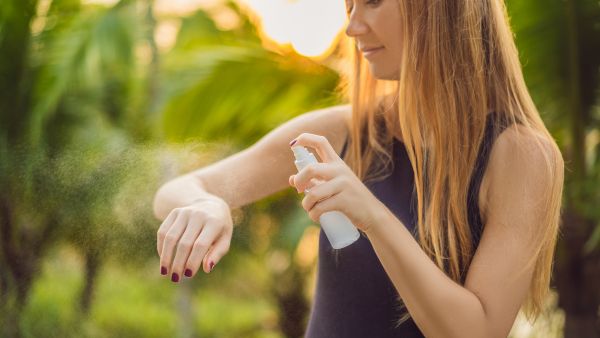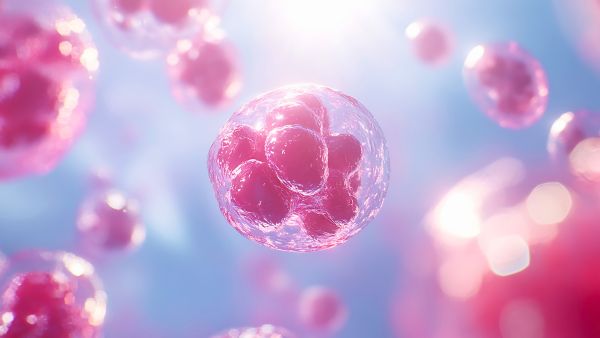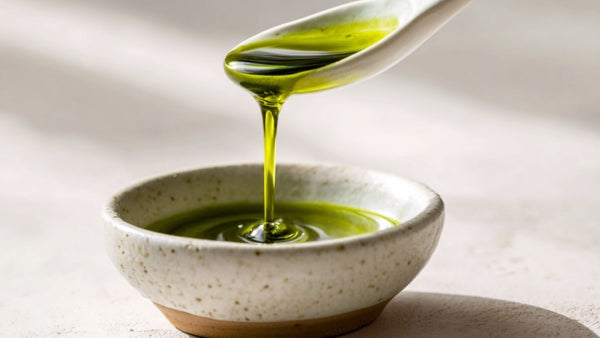7 Skincare Ingredients That May Make Your Skin More Sensitive to the Sun

Sunshine lifts our spirits, brightens our days, and provides essential Vitamin D.
But if you're a skincare aficionado, you're well aware of the sun's darker side. Ultraviolet rays can cause premature aging, hyperpigmentation, and, at worst, skin cancer.
You likely already know the importance of slathering on sunscreen, donning wide-brimmed hats, and staying in the shade during peak UV hours.
But, did you know that certain skincare ingredients can actually increase your skin's sensitivity to the sun?
From powerful skin lighteners to popular skin exfoliators, there's a laundry list of ingredients in skincare products that can make your skin more sensitive to sunlight, leading to quicker sunburns, pigment changes, and a potentially increased risk of skin cancer.
In this post, we'll dive into the nitty-gritty of photosensitivity, highlighting those innocent-looking bottles on your bathroom counter that could secretly be turning your skin into a UV magnet.
Ingredients That Can Cause Photosensitivity
Let's explore seven of the most common skincare ingredients that can increase your skin's sensitivity to the sun.
Alpha and Beta Hydroxy Acids (AHAs and BHAs)
AHAs and BHAs are prominent players in the skincare world for their role in exfoliation. Glycolic acid, lactic acid, and salicylic acid are among the most common.
By promoting the shedding of dead skin cells, these ingredients can leave newer, more vulnerable skin exposed, making your skin more susceptible to sun damage.
Hydroxy acids can also break down your skin’s acid mantle and disrupt skin barrier function. This can lead to an imbalance in skin PH and make it vulnerable to additional environmental irritants. Using a nutrient-rich recovery serum like our Alpine Phytonutrient or Purist Delicate Skin Serum can help skin bounce back more quickly and support skin barrier health.
If hydroxy acids are a standard ingredient in your skincare routine, take extra care to protect your skin from sun exposure.
Chemical Sunscreens
It might sound paradoxical, but certain chemical sunscreens can sometimes provoke a photosensitive reaction.
Ingredients such as avobenzone, oxybenzone, octocrylene, and octinoxate absorb UV radiation, transform it into heat, and release it from the skin.
A study in the Journal of the American Academy of Dermatology showed that some people can have allergic reactions to these chemical absorbers, which can manifest as photosensitivity.
In addition, several of these chemical sunscreen ingredients, like octocrylene, degrade during sun exposure becoming benzophenone, a compound suspected of being carcinogenic and endocrine disrupting.
Traditional Retinoids
Retinoids are derivatives of Vitamin A and are lauded for their anti-aging and acne-fighting benefits. Unfortunately, they can also make your skin more sensitive to sunlight.
This sensitivity is due to the thinning of the stratum corneum, the skin's outermost layer. A study in the Archives of Dermatology confirmed that the use of topical tretinoin resulted in increased sun sensitivity.
Botanical retinoid alternatives, like Dew Bean, found in our Aspen Dew Illuminating Essence, are a gentler alternative to traditional retinoids and do not cause photosensitivity.
Certain Citrus Essential Oils
Specific citrus essential oils, such as Bergamot, Lemon, and Lime, can induce a phototoxic reaction when applied to the skin, followed by exposure to the sun.
The compounds responsible for this effect are called furanocoumarins. Never apply these essential oils directly onto your skin and avoid using skincare products with these ingredients prior to sun exposure.
Benzoyl Peroxide
Benzoyl peroxide works to prevent breakouts by delivering oxygen to skin pores, killing the anaerobic (unable to live in oxygen) P. acnes bacteria responsible for acne formation. It also helps to exfoliate the skin, removing dead skin cells that can clog pores.
Unfortunately, benzoyl peroxide can also make your skin more sensitive to sunlight. The mechanism by which it causes photosensitivity isn't yet completely understood, but it is believed that it increases the skin's sensitivity to UV radiation by inducing oxidative stress.
The mild irritation and redness that accompany benzoyl peroxide use can be exacerbated by sun exposure.
Hydroquinone
Like many other skin-lightening agents, hydroquinone can cause photosensitivity. This is because it disrupts the production and distribution of melanin, which naturally helps protect skin from harmful UV radiation. Using hydroquinone can make your skin more susceptible to UV damage.
While effective, hydroquinone is best used with caution. Not only can hydroquinone cause photosensitivity, but it also increased the risk of developing a condition called ochronosis, a rare but potentially permanent skin discoloration.
For a natural alternative, our Aspen Dew Illuminating Essence contains Aspen Bark which brightens skin without the photosensitizing side effects.
Always use sunscreen and limit sun exposure while using hydroquinone. It should not be used for long periods without a break and always under the supervision of a dermatologist.
Accutane
Accutane, now called Isotretinoin, is a highly potent drug that can lead to serious side effects, the least of which is increased sun sensitivity and burning. Always wear SPF 50+ if you are using Accutane as part of your skincare routine and never use it without medical supervision.
So now you're probably thinking, "Great, I can't use anything anymore!" Hold your horses! There's no need to throw out half your beauty cabinet.
How to minimize photosensitivity
Understanding how your beauty routine might be making you photosensitive is half the battle. Here’s what you can do about it.
Know Your Ingredients: Get in the habit of reading product labels. Understand what's in your beauty products and how they may impact your skin.
Apply Sunscreen Religiously: Non-toxic mineral sunscreen is your best friend, rain or shine. Choose a broad-spectrum sunscreen that protects against both UVA and UVB rays, and don't skimp on it!
Avoid Direct Sunlight: The sun's rays are the most harmful between 10 AM and 4 PM, so try to stay in the shade during these hours.
Wear Protective Clothing: Wide-brimmed hats, sunglasses, and long-sleeved clothing can provide additional protection.
Just like Sid the Seagull reminds us in one of the most successful health campaigns in Australia's history, “Slip! Slop! Slap!”
Slip on a shirt, slop on some sunscreen, and slap on a hat before you go out in the sun! If you haven’t seen it yet it’s worth Googling.
And always check with your healthcare provider or dermatologist about the potential photosensitivity effects of both your skincare products and medications.
Sources:
J. Kim, K. J. Park, H. J. Park, E. Kim, Y. H. Kim, J. M. Park, and Y. I. Park. “Ultraviolet Radiation-Induced Skin Aging: The Role of DNA Damage and Oxidative Stress in Epidermal Stem Cell Damage Mediated Skin Aging.” Stem Cells International, vol. 2016, Article ID 7370642, 14 pages, 2016.
Ditre, CM et al. “Effects of alpha-hydroxy acids on photoaged skin: a pilot clinical, histologic, and ultrastructural study.” Journal of the American Academy of Dermatology vol. 34,2 Pt 1 (1996): 187-95.
Nash, JF and Tanner, PR. “Relevance of UV filter/sunscreen product photostability to human safety.” Photodermatology, Photoimmunology & Photomedicine, vol. 30,2-3 (2014): 88-95.
Mukherjee, S et al. “Retinoids in the treatment of skin aging: an overview of clinical efficacy and safety.” Clinical Interventions in Aging, vol.1,4 (2006): 327-348.
Kligman, LH. “Effects of all-trans-retinoic acid on the dermis of hairless mice.” Journal of the American Academy of Dermatology, vol.15,4 Pt 2 (1986): 779-85, 866-7.
Moore, DE. “Drug-induced cutaneous photosensitivity: incidence, mechanism, prevention and management.” Drug Safety, vol.25,5 (2002): 345-72.
Lim, HW et al. “American Academy of Dermatology Consensus Conference on UVA protection of sunscreens: summary and recommendations. American Academy of Dermatology.” Journal of the American Academy of Dermatology, vol. 44,6 (2001): 505-8.



